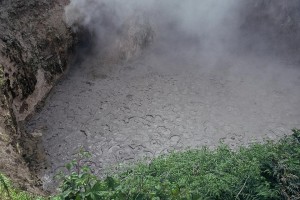Geothermal features include steaming ground, boiling mud pools, fumaroles, and hot springs. Not all geothermal features are hot; some contain cooled geothermal water with a high mineral content.
Geothermal features support rare ecosystems with high soil, water, or air temperatures, unusual and often extreme chemical environments (e.g., high acidity or alkalinity, high concentrations of toxic chemicals such as arsenic, mercury, and boron), and a range of unpleasant gases (e.g., hydrogen sulphide).

Almost 80% of New Zealand’s geothermal resources occur within the Waikato Region, yet the Region’s geothermal features still only cover a total area of 579 ha.
The special types of vegetation or biota that occupy geothermal ecosystems include:
- Prostrate kanuka shrubland over a turf of unusual mosses, liverworts, and lichens
- Low fertility shrubland of mingimingi, manuka, and monoao.
- Ferns, fern allies, and orchids rare in New Zealand but more common in the tropics.
- Thermophilic (heat-loving) microorganisms such as stunningly coloured blue green algae.
- Subtropical fungi attached to plant roots that assist plant survival.
- Species of invertebrates and algae that occur only in thermal pools and springs.
- Coastal plants found around geothermal sites (e.g., arrow grass, Triglochin striata).

